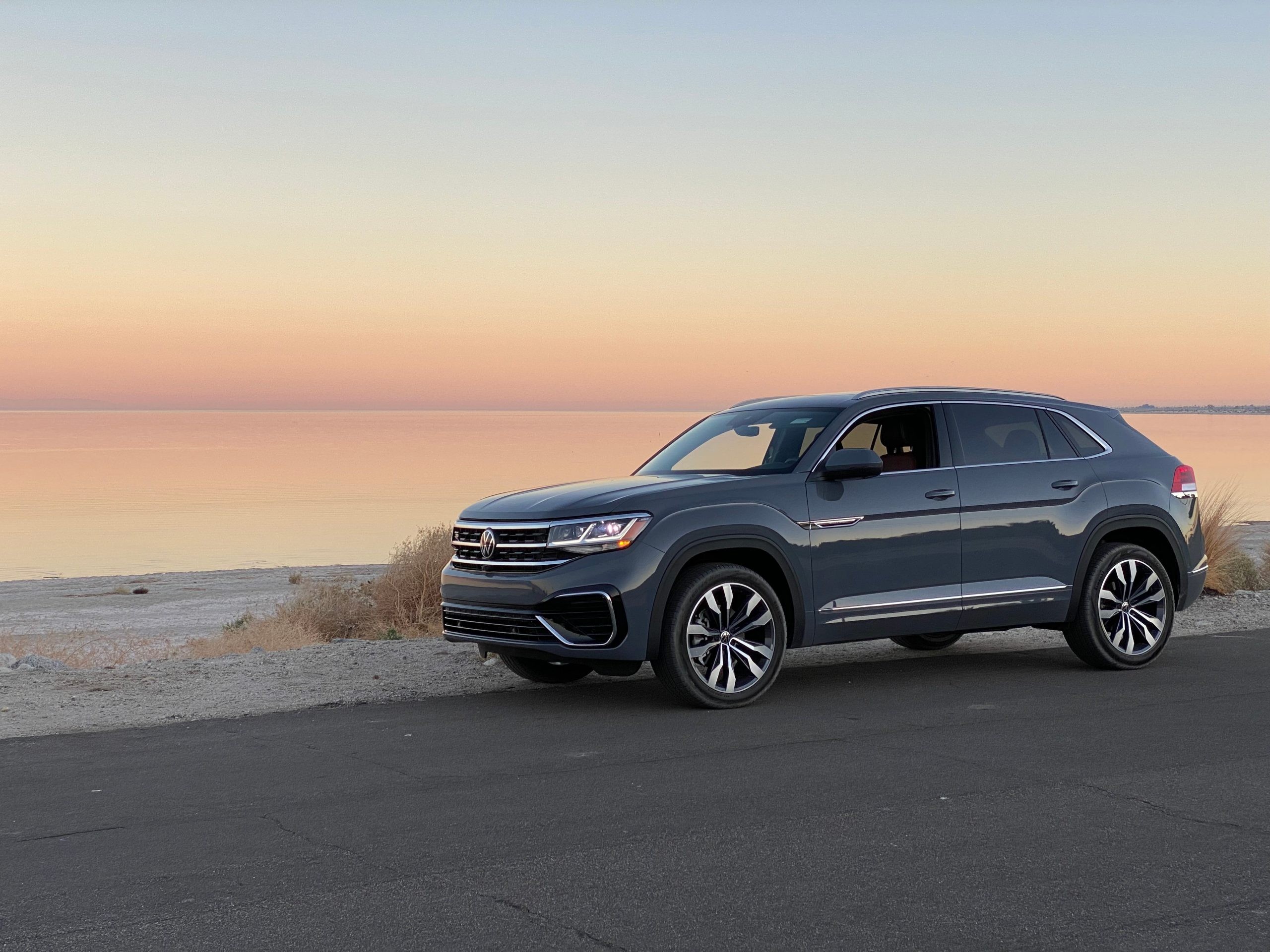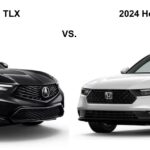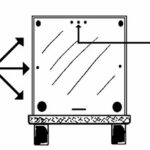Volkswagen recently announced a revamp for its Atlas crossover, featuring a new look, a new engine, and an upgraded interior. However, this update marks the end of an era for enthusiasts: the venerable VR6 engine will no longer be offered in this model, signaling its departure from the American market after 32 years. The VR6 engine, Volkswagen’s ingenious solution for fitting a V6 into compact vehicles, paved the way for groundbreaking engine designs like the W8, W12, and W16. Let’s delve into the history and significance of this remarkable powerplant.
I recently had the opportunity to experience the VR6 firsthand in a 2022 Atlas Cross Sport SEL Premium R-Line. As an owner of two first-generation Volkswagen Touaregs, one equipped with a 3.2-liter VR6 and the other with a 5.0-liter V10 TDI, I was particularly interested in assessing how the Atlas, which effectively replaced the Touareg in the American market, measured up. My test drive aimed to determine if the Atlas retained the essence of a Touareg, albeit without the same level of off-road prowess.
The Atlas Cross Sport proved to be surprisingly capable, boasting modern technology absent in my older Touaregs. Its handling was commendable, and its acceleration to 60 mph was nearly on par with my V10 TDI, all without the daunting maintenance associated with a V10 diesel. The area where I felt the Atlas fell short was the interior, which presented an inconsistent mix of materials. However, Volkswagen has addressed this in the 2024 model, promising a more refined cabin.
What truly captured my attention was what lay beneath the hood. The “V6” badge on the Atlas Cross Sport hinted at its engine, but the sound it produced under acceleration was far from ordinary. Upon inspection, I discovered the familiar sight of Volkswagen’s narrow-angle VR6 engine.
In the Atlas models, the 3.6-liter VR6 delivers 276 horsepower and 266 lb-ft of torque, propelling the 4Motion AWD version to 60 mph in approximately 8.3 seconds – respectable performance for a 4,464-lb crossover.
The 2024 Atlas will transition to a 2.0-liter turbo four-cylinder engine producing 269 horsepower and 273 lb-ft of torque, with peak torque arriving at a mere 1,500 RPM. This new engine is projected to improve the Atlas’s 0-60 mph time to 7.5 seconds and offer enhanced fuel efficiency.
Volkswagen representatives explained that the VR6 engine’s outdated technology made it increasingly challenging to meet increasingly stringent emissions regulations. Combined with its less-than-stellar fuel economy, the decision to phase out the VR6 became inevitable.
The writing had been on the wall for the VR6 for some time. As early as 2017, publications like Road & Track were already publishing obituaries for this engine, but its final departure from the Volkswagen lineup took several years.
Over time, the Atlas became the sole Volkswagen vehicle in America to offer the VR6. Currently, only two models in the Chinese market feature a smaller VR6, and even these are expected to be discontinued as Volkswagen continues its shift towards smaller, more efficient engines.
This raises the question: why mourn the loss of an engine deemed “inferior” and outdated? The answer lies in the VR6’s unique character and innovative design.
The Unique Engineering of the VR6 Engine: A Blend of Inline and V Configurations
The VR6 engine stands out due to its unusual configuration, merging attributes of both inline and V engines. The “VR” designation itself is a portmanteau, combining “V-Motor” (V engine) and “Reihenmotor” (German for inline engine). This “V-inline” design is what makes the VR6 so special. But how can an engine embody both V and inline characteristics, and what prompted its creation?
The concept of this engine type dates back to 1922 with Lancia’s groundbreaking V4 engine in the Lambda. Lancia, known for its innovation, pioneered the narrow-angle V4 with a bank angle starting at 13 degrees and displacements ranging from 2.1 to 2.6 liters. These early V4 engines produced between 49 and 69 horsepower.
Image Credit: Andrew Bone
Lancia refined its V4 engine until 1963, culminating in its use in the Fulvia. By the Fulvia’s final year in 1976, the V4’s bank angle had narrowed to 11 degrees, and power output had increased to approximately 130 horsepower.
The VR engine concept resurfaced triumphantly in 1991, this time under the Volkswagen banner. The Corrado and Passat B3 became the first Volkswagen models to offer the 2.8-liter VR6, producing 178 HP and 172 HP, respectively. The VR6 was an engineering marvel in packaging, enabling Volkswagen to install V6 power into engine bays typically designed for four-cylinder engines. For context, the original Corrado’s most potent engine was a 1.8-liter G60 supercharged four-cylinder producing 158 HP. The VR6 provided a significant power upgrade, initially to 176 HP and later to 188 HP. In an era before turbocharged four-cylinder engines became commonplace, the VR6 offered substantial performance gains in a compact form factor.
Volkswagen’s ingenious approach involved using a narrow 15-degree angle between cylinder banks, in contrast to the wider 60-degree or 90-degree angles found in conventional V-engines. The cylinders were staggered, and the compact design allowed these V-engines to utilize a single common cylinder head.
Image Credit: eBay Seller
This unique engine design presented specific engineering challenges. EngineLabs provides a detailed explanation:
In order to maintain the typical 120-degree firing interval between the cylinders, the split-pin design offsets each bank’s crank journal by 22 degrees. Another aspect of the engine design shared with inline engines is obvious when looking at the crankshaft. The crankshaft bears more resemblance to that of an inline-six crankpin arrangement than that of an even-fire (split-pin) V6 crankshaft.
Just like the block, a single-cylinder head for two banks of cylinders creates some unique considerations. Built in both two- and four-valve-per-cylinder designs, the overhead camshaft cylinder head design posed a unique challenge to engineers. In order to have each intake runner be the same length and volume to ensure that each cylinder was making the same power at a given RPM, they had to get creative, while maintaining tight packaging.
The VR6 architecture also served as the foundation for other engine variants, including the VR5, a five-cylinder version. Under Ferdinand Piëch’s leadership at Volkswagen starting in 1993, the VR engine family expanded significantly, becoming the basis for the renowned W engine configurations.
A W12 engine is essentially two VR6 engines joined together in a “W” configuration. Volkswagen utilized the VR design to develop W engines ranging from the W8, offered in the Passat B5.5, to the W16 found in Bugatti supercars, and even conceptual W18 engines. Volkswagen officials have acknowledged that the VR engine was instrumental in the development of the Bugatti Veyron’s engine.
Beyond its engineering ingenuity, the VR6 engine is celebrated for its distinctive sound, particularly when tuned for performance.
The VR6 engine’s compact dimensions, comparable to a four-cylinder, and its robust performance have made it a favorite among automotive enthusiasts.
My own experience with the VR6 in my 2005 Volkswagen Touareg has been overwhelmingly positive. Despite being the base engine option, it has proven to be a reliable and smooth workhorse, capable of towing and off-roading while maintaining a respectable fuel economy of around 18 mpg.
The Demise of the VR6: Efficiency and the Rise of Turbocharging
Image Credit: Cars & Bids Seller
If the VR6 engine is so exceptional, why is it being phased out?
The VR6 once enjoyed widespread use across the Volkswagen range, from the Eurovan to the Golf, Touareg, and Eos. More recently, it was found in the Passat, Atlas, and select Chinese market models like the Audi Q6 and Volkswagen Talagon. Now, its presence is limited to only a couple of Chinese market models, and even those are expected to be discontinued.
The primary reasons for the VR6’s discontinuation are outlined in this insightful video by Jason from Engineering Explained and Charles from Humble Mechanic:
In essence, while the VR6 excels in packaging, it is complex to manufacture and service. Crucially, modern turbocharged four-cylinder engines can now deliver comparable power with superior fuel efficiency. Stricter emissions standards and the automotive industry’s broader trend towards engine downsizing, coupled with the rise of electric vehicles, have made engines like the VR6 less viable.
Volkswagen officials corroborate this, stating that the VR6 represents an era when more power necessitated larger engines. Today, smaller, turbocharged engines can achieve the same output more effectively.
Consequently, Volkswagen no longer deems the VR6 essential or desirable to retain in its lineup. The VR6 served admirably for three decades, powering enthusiast vehicles and even forming the basis for some of the most extraordinary engines ever produced. However, it is now making way for smaller turbocharged four-cylinder engines and electric powertrains like that in the ID.4.
Despite its departure, the VR6 will undoubtedly hold a special place in the hearts of countless water-cooled VW enthusiasts. This unique six-cylinder engine, with its compact size and distinctive character, leaves behind a remarkable legacy.


